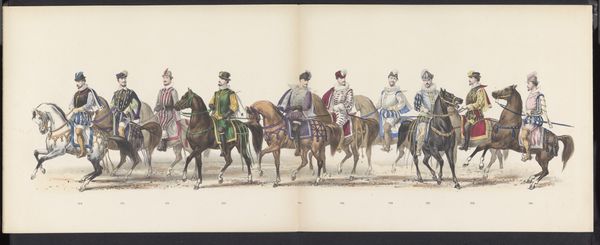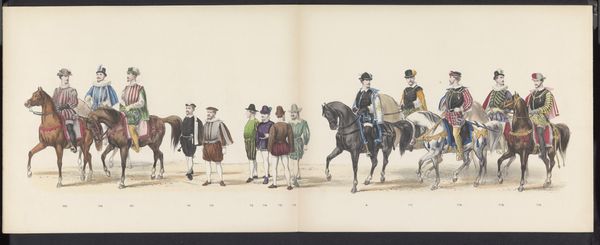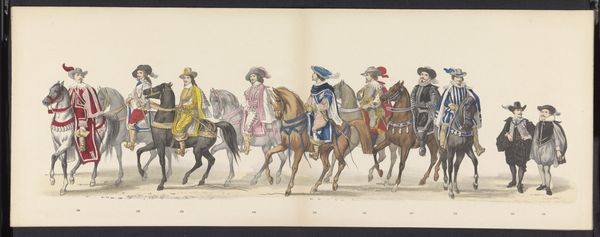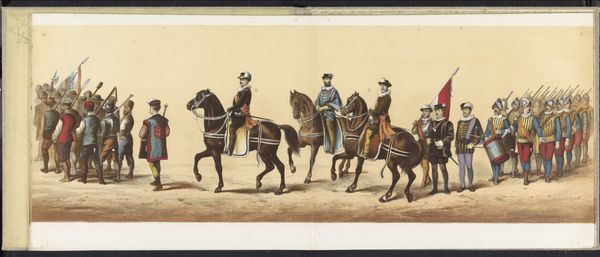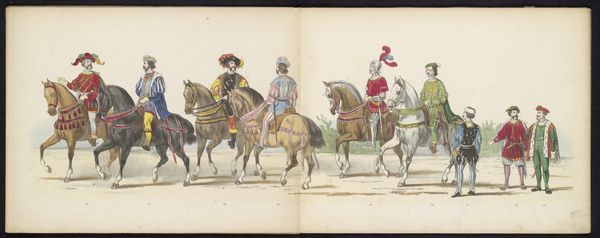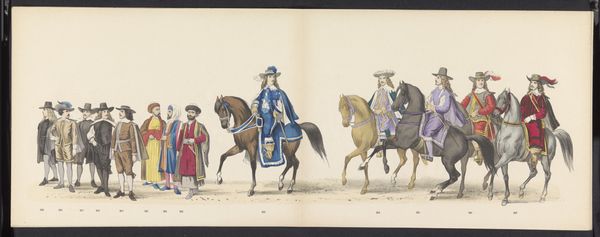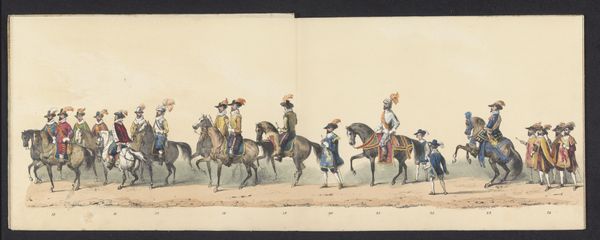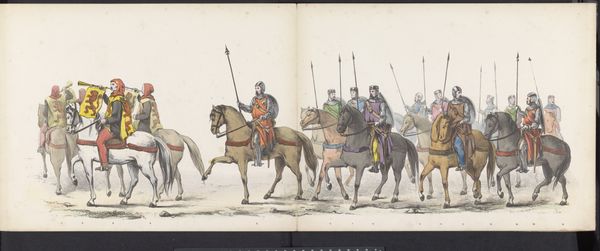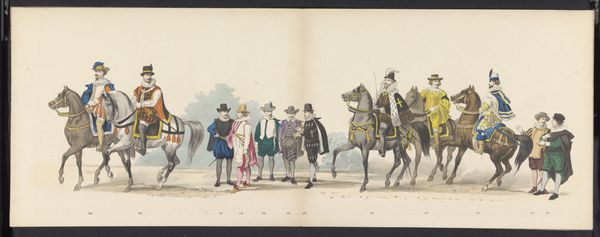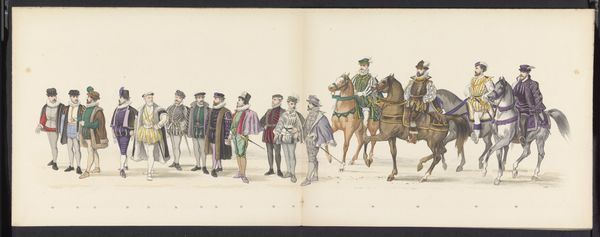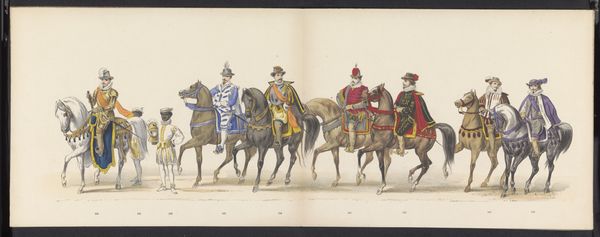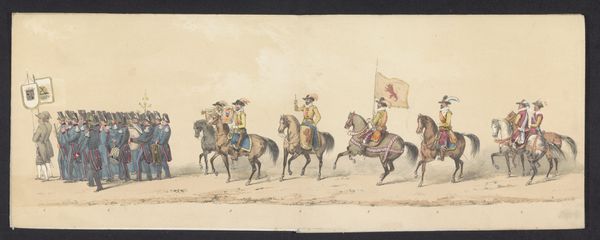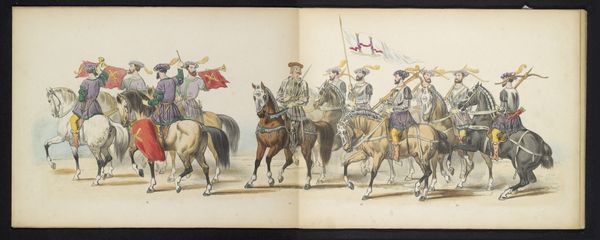
drawing, print, ink
#
portrait
#
drawing
#
narrative-art
# print
#
ink
#
watercolour illustration
#
genre-painting
#
history-painting
#
academic-art
Dimensions: height 275 mm, width 710 mm
Copyright: Rijks Museum: Open Domain
Editor: Here we have Gerardus Johannes Bos's "Maskerade van de Leidse studenten, 1870," a print created with ink. The figures in their vibrant, somewhat theatrical costumes, certainly capture your attention. What elements jump out to you? Curator: The sequential arrangement of figures and horses invites immediate semiotic investigation. Consider the visual rhythms established through repetition. Note the varied heights, postures, and chromatic values. The relationship between these elements and the blank space creates intervals that activate the plane. Editor: So you're seeing a structured approach in the way they're laid out? Curator: Precisely. Note the subtle shifts in palette, transitioning from darker tones on the left to lighter, more vibrant hues towards the center and then back again. Observe how line dictates form and contributes to the overall flatness, particularly within the depicted garments. Consider the artist's deployment of light, or rather, a studied avoidance thereof, creating a stark visual field, devoid of naturalistic shadowing. Editor: The figures almost seem staged rather than interacting, which further removes the element of time... Curator: Yes. The composition lacks dynamic tension. We can read that, using structuralism, the relationships between elements is purely symbolic. How the visual elements create a specific message or communicate social structure within the context of a formal parade. What does the structure reveal? Editor: This perspective has shifted how I read the artwork's order and balance, making it easier to appreciate Bos' formal decisions, rather than searching for deeper meanings within. Curator: Indeed. This method, in itself, gives insight to historical visual rhetoric.
Comments
No comments
Be the first to comment and join the conversation on the ultimate creative platform.
